On International Museum Day, who better than Sabyasachi Mukherjee, director of CSMVS, to pick favourites from its collections? Now, try to locate some of these rare finds!
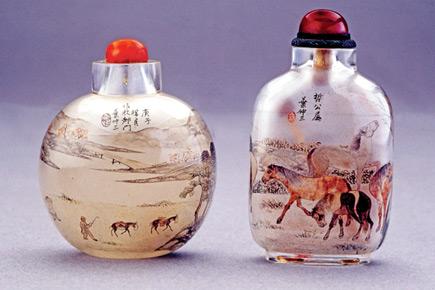
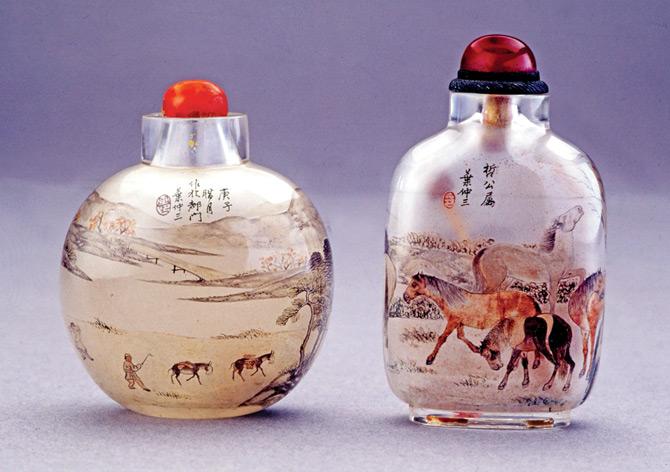
ADVERTISEMENT
Snuff Bottles China. 18th-19th Century A.D
The snuff bottles in the Tata collection are a source of great delight and are known to collectors all over the world. As the name implies, these bottles were designed to hold snuff: a preparation of powdered tobacco, enhanced with spices. Snuff was introduced to the Qing court (1644-1912 AD) by Europeans in the late 17th Century. It soon became fashionable in the Imperial court. The early bottles were simple in form. With demand and popularity, these evolved into beautiful works of art. Snuff bottles are a reflection of Chinese art in miniature form. They are especially rich in Chinese symbols because they were carried on one’s person and reflect the sentiments and style of their owners.
The bottles have different shapes and are made of materials like jade, amber, porcelain, wood, ivory and horn. Interesting among these snuff bottles are the glass ones painted from the inside with beautiful landscapes and human figures.
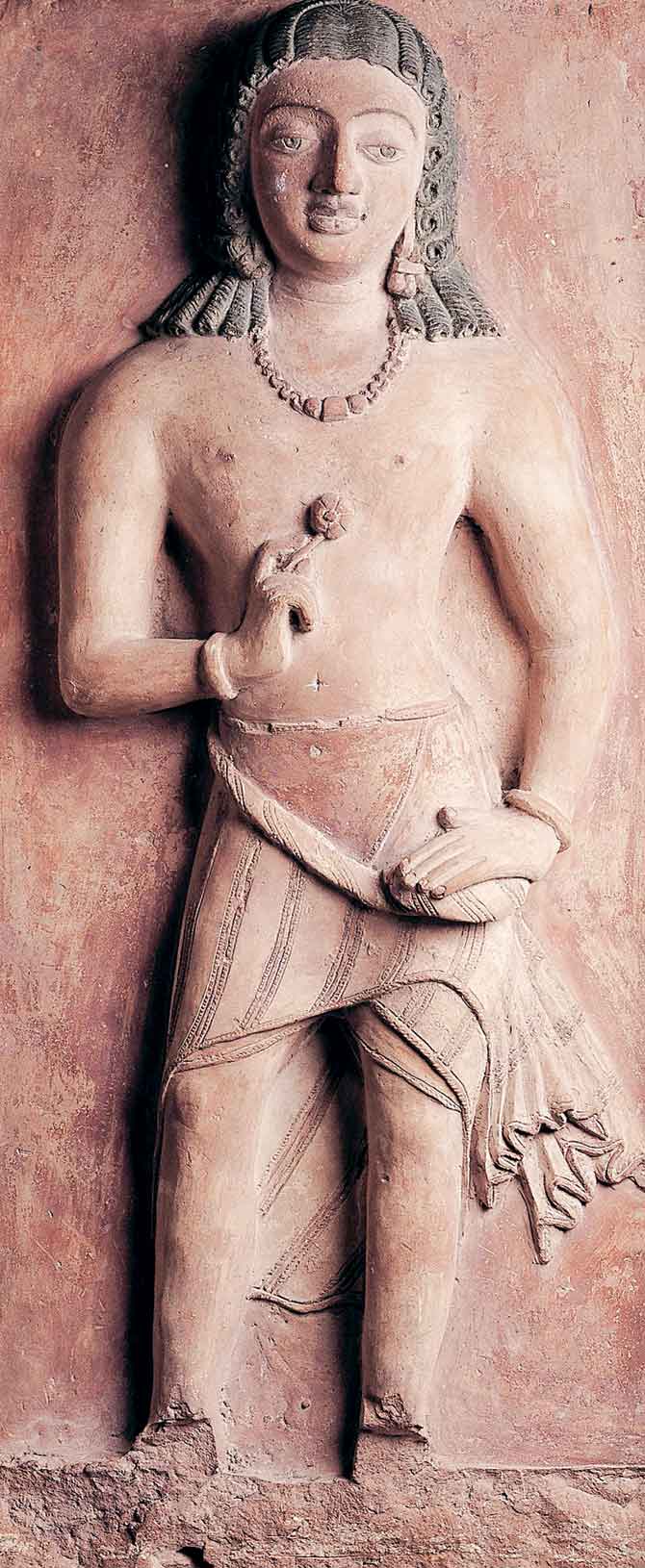
Devotee
Terracotta. Mirpurkhas, Sindh, Pakistan. 5th Century CE (Acc. No. TC 56)
This terracotta sculpture is the legacy of the famous 19th Century archaeologist Henry Cousens, who excavated the site of a stupa at Mirpurkhas, one of the most important and well preserved sites of the Indo-Greek Buddhist settlements. This sculpture was found leaning against the north wall of the central shrine. Curiously, this is the only secular image among the large number of religious figures. The image probably represents a donor disciple who contributed towards the construction of the stupa. The modelling is a bit heavy, but the expressive face, the half-closed thoughtful eyes, the sharp arch of the eyebrows and full lips exude a charm. Even the hair is arranged with care. The devotee’s elegantly-draped striped dhoti has traces of paint. The manner in which he holds the flower is reminiscent of the famous Bodhisattva Padmapani painting, in cave No 1 at Ajanta.
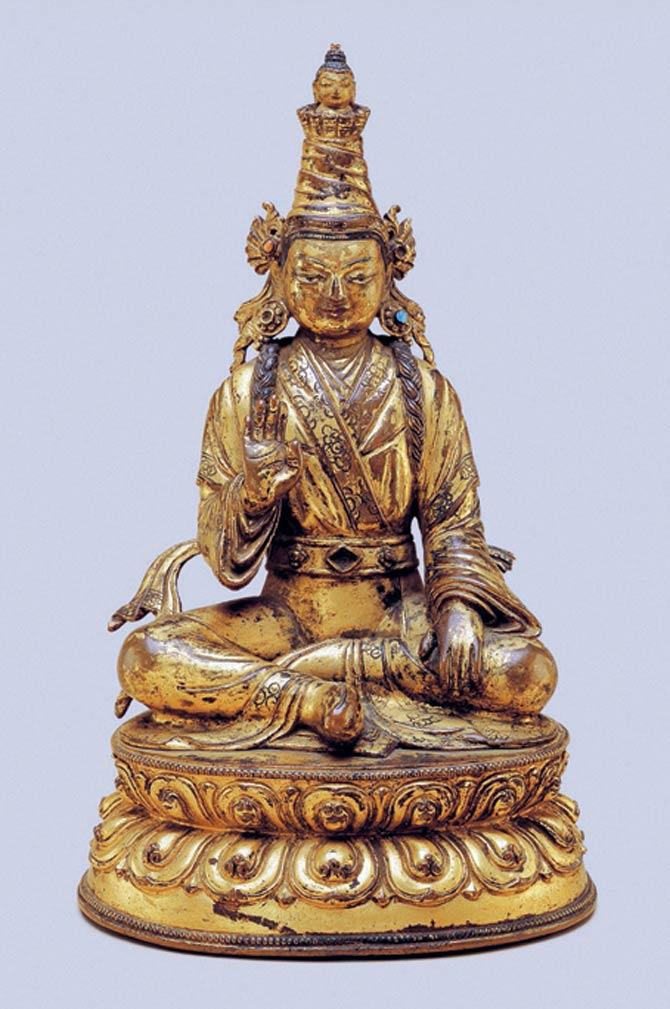
Songten Gampo
Gilt Bronze. Tibet. 16th Century CE (Acc. No. 65.11)
King Songtsen Gampo (died Circa 650 AD) introduced Buddhism in Tibet. Though he did not claim any supernatural powers, he was deified and worshipped by the people as the incarnation of Chenresik or Avalokiteshvara, the great protector of Tibet. His images began appearing soon after his death. It is identified by the depiction of the Dhyani Buddha, Amitabha on his tall pleated headgear, as in the images of Avalokiteshvara.
The king is seated in Lalitasana while his right hand is raised in Abhayamudra, a gesture of reassurance. The dress and ornaments are similar to those of any royal figure of Tibet.
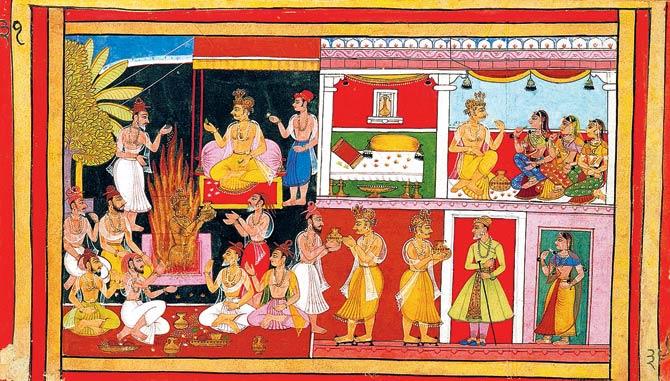
Dasharatha performs the Putreshti Yajna (Acc. No.54.1/8) Dasharatha, the king of Ayodhya is performing Putreshti yajna for a male progeny
Folios from a set of the Ramayana
Rajasthani, Udaipur. Dated Samvat 1706 = AD 1649 Artist: Manohar
The museum acquired 19 folios of a dispersed Ramayana set painted during the patronage of Maharana Jagat Singh I (1628-52 AD), whose atelier was crowned by two great artists: Sahebdin and Manohar. The king seems to have been interested in large and extensive illustrations of the epics and the Puranas. Though Mewar paintings are known from the time of Chawand Ragamala (1605 AD), the Mewar style was well defined by the paintings of these illustrated manuscripts. Sahebdin and Manohar continued to a great extent with Indian colour tonalities, flat backgrounds, prominently Indian narrative style and bold draughtsmanship. The book was written by Mahatma Hirananda at the command of the teacher Jasvantji.
 Subscribe today by clicking the link and stay updated with the latest news!" Click here!
Subscribe today by clicking the link and stay updated with the latest news!" Click here!







